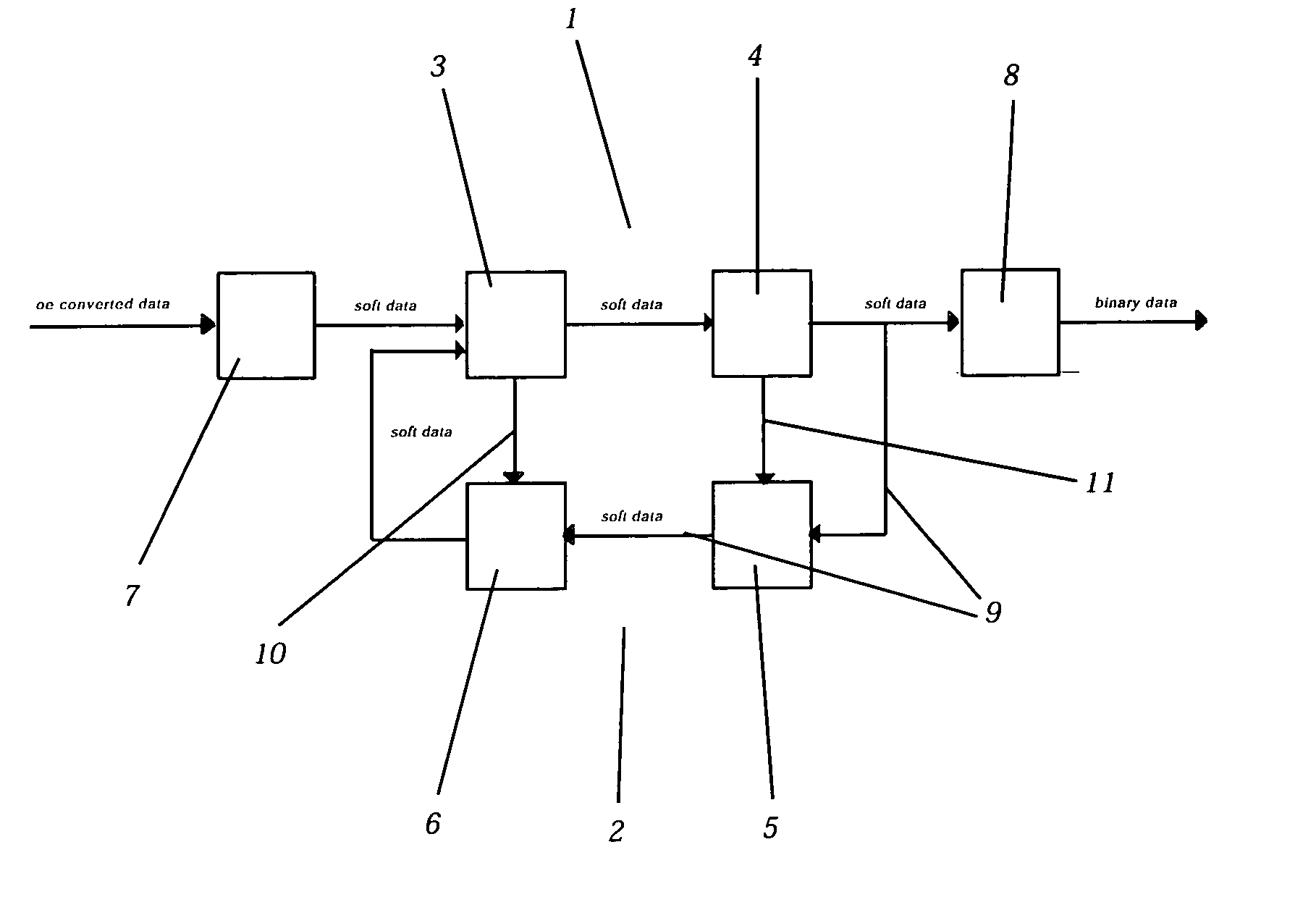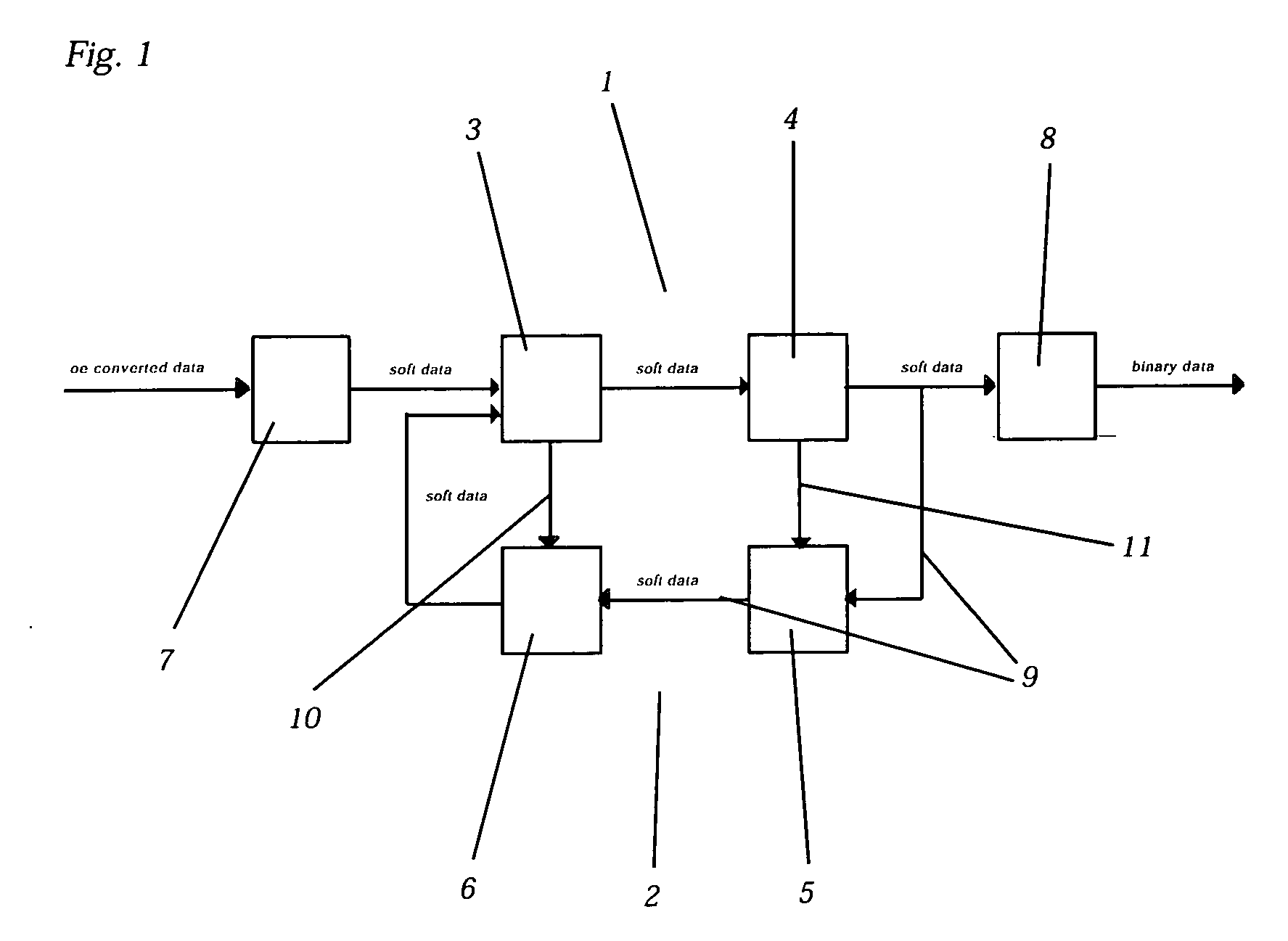Receiver for optical or electromagnetic signals with iterative equalization and error correction plus a method for improving the exactness in relating binary data to a digitalized -data transmitting, analog electromagnetic or optical-electrical signal
a technology of optical or electromagnetic signals and equalizers, applied in the direction of digital transmission, amplitude demodulation, baseband system details, etc., can solve the problems of reducing the efficiency of equalizers and fec, the inability to relate digital data unambiguously to analog signals, and the reduction of the quality of digital signals. , to achieve the effect of improving system budget, reducing the minimum optical signal-to-noise ratio value, and optimizing equalizers and
- Summary
- Abstract
- Description
- Claims
- Application Information
AI Technical Summary
Benefits of technology
Problems solved by technology
Method used
Image
Examples
Embodiment Construction
[0029] An analog signal, e.g. an optical signal, is being fed to an ADC 7 on the receiver side. Each amplitude corresponds to a digital signal in form of ‘1’ or ‘0’. The ADC 7 transforms the analog signal in digital soft data. The soft data comprises groups of bits, each corresponding to the value of the related analog amplitude. By transforming the analog input signal into bit groups of a soft-data output signal, the value of the amplitude of the analog signal can be digitally captured and used for making a hard decision, i.e. relating the analog signal to a digital value in the form of ‘1’ or ‘0’. The Viterbi equalizer 3 used for the iteration loop 2 is a soft-in / soft-out Viterbi equalizer, which is capable of processing and outputting soft data. The soft data outputted by the Viterbi equalizer 3 is being fed to a modified FEC decoder 4 which is capable of both processing and outputting soft data. According to the state of the art, FECs are exclusively used for processing binary d...
PUM
 Login to View More
Login to View More Abstract
Description
Claims
Application Information
 Login to View More
Login to View More - R&D
- Intellectual Property
- Life Sciences
- Materials
- Tech Scout
- Unparalleled Data Quality
- Higher Quality Content
- 60% Fewer Hallucinations
Browse by: Latest US Patents, China's latest patents, Technical Efficacy Thesaurus, Application Domain, Technology Topic, Popular Technical Reports.
© 2025 PatSnap. All rights reserved.Legal|Privacy policy|Modern Slavery Act Transparency Statement|Sitemap|About US| Contact US: help@patsnap.com


